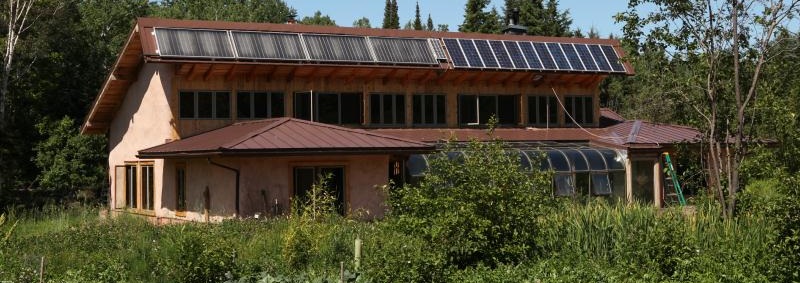The Draw
Waters Edge Nursery & Gardens

Principles of Permaculture
as compiled by Nathaniel Larson
Permaculture principles help provide us with a way of thinking that enables the establishment of highly productive systems. All principles have been derived from observation of natural systems. All principles are non-dogmatic; every situation is unique. Principles (along with ethics and design methodology. generally make-up the core of an introduction to permaculture course. No two instructors will organize information into the same principles and the number of principles very. The following list of principles is how I understand the information.
- Work With Nature.
- When we understand natural patterns and processes we can design to minimize our work and maximize our yield.
- ex. Time to calve when local wild ruminants are calving.
- ex. Instead of spraying chemicals on our crops design in habitat for beneficial predators.
- Everything Gardens or Everything Has an Affect on the Environment.
- When we examine how organisms change ecosystems we may find useful allies in our effort to sustain our selves and other species.
- It is up to us to decide if we should control, amplify, manage, or tolerate effects of any one element
- ex. People have a hard time getting to their ripe walnuts, hazelnuts etc because squirrels will clean them out quick. Squirrels are great nut harvesters. We can scratch our head figuring out how to keep them from our nuts or we could place pipes in our nuttery for squirrel habitat. We can then go to the pipes and harvest (easily. a good % of our nuts.
- Make least change for Greatest affect.
- ex. When choosing a site for a damn select an area where you get the most water stored for the least earth moved.
- Every Important Function is Supported by Many Elements
- Functions: water, shelter, food, energy, protection etc.
- Elements: pond, house, tree, garden etc.
- Principle of redundancy. Don’t put all your eggs in one basket.
- Each Element Performs Many Functions
- Try to get each element performing at least three functions. This is to connect the system to more of itself, to make it more self supporting and resilient.
- This is not forcing functions-we don’t want to ask a milk cow to pull logs out of the woodland, make hay, and wean off a calve. This is just placing elements so as their normal natural behavior is being taken full advantage of.
- ex. A deciduous wind tolerant fruit tree on the west side of our house serves its function of fruit production quiet well (even better with the heat sink of the house. as well as acting as a wind break for your zone 1, shading the west side of your house in the hot summer and allowing the sun into your house in the cold winter.
- Stacking in Space and Time
- Three-dimensional staking: ex. Southern profile-Tall tree-short tree-bush-ground cover.
- Stacking in time; succession planting for both annuals and perennials.
- Cycle energy, nutrients, and resources.
- Use energy as much as possible before it leaves your land and when it leaves make sure it is leaving in a higher quality state. For example water entering your land can be caught in a diversion channel, which flows to a pond. The pond could support an aquaculture system which increases the nutrient level of the water and drops the sediment out of it. Water can be pumped from the pond to irrigate in dry times. As the water leaves your land it should leave with less sediment and a healthy level of nutrients and life.
- There is no liner system in nature. Waste=food.
- Use Biological/Renewable Resources.
- Trucks start dying right after their made and don’t make more trucks. Trucks turn energy into waste and pollution, horses turn energy into soil.
- The Problem is the Solution
- Everything works both ways
- Looking at a problem differently can lead to its solution
- ex. If your problem is that your subsoil is compacted clay your solution could be to dig a pond.
- The Principle of Next Highest Use
- Ex 1: Kill a deer and put it under a fruit tree for fertilizer
- Ex 2: Kill a deer-eat it and put humanure under tree for fertilizer
- Ex 3: Kill a deer-eat it add red wrigglers to humanure allow them to work over the pile and proliferate-feed worms to fish-eat fish-add to humanure pile etc.
Nathaniel Larson is a father, brother and husband at The Draw, a land-based community on the south shore of Lake Superior, where he does his best to live a life in service to Gaia.